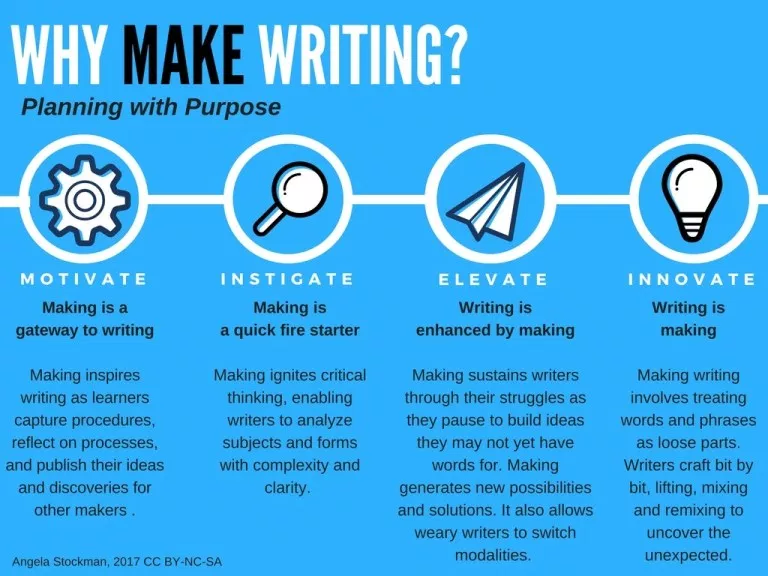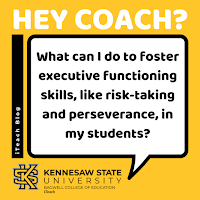Connecting Maker Ed to Classroom Content
 Hey Coach,
Hey Coach,I’ve heard that Maker Ed is a great way for kids to develop creativity, critical thinking, and collaboration skills. How can I incorporate making into my classroom with what I’m already doing instead of as something extra?
Sincerely,
Maker Curious
Dear Maker Curious,
You’re right! Maker Ed is definitely a great way for kids of all ages to develop creativity, critical thinking, and collaboration skills. Many teachers want to integrate making into the content kids are already learning, but don’t know where to start or how to secure the resources they need. I hope this post helps you and others discover some ways to start small and take off on your Maker Ed journey.

You’re right! Maker Ed is definitely a great way for kids of all ages to develop creativity, critical thinking, and collaboration skills. Many teachers want to integrate making into the content kids are already learning, but don’t know where to start or how to secure the resources they need. I hope this post helps you and others discover some ways to start small and take off on your Maker Ed journey.
Make Writing
Angela Stockman, author of Make Writing: 5 Teaching Strategies That Turn Writer’s Workshop Into a Maker Space and Hacking the Writing Workshop: Redesign with Making in Mind, encourages teachers to use making to motivate, engage, and inspire student writers. She suggests starting a writing workshop with a fire starter--a quick maker challenge intentionally designed to spark ideas and clarify thinking. These activities also create a scaffold for writers who need an oral or visual framework before transitioning to print. Fire starters include constraints--a prompt, limited building materials, a time limit, and levels of collaboration--to make the process purposeful. Stockman shares examples of fire starters on her blog post.STEM Challenges
Add a STEM challenge to a science unit to provide opportunities for students to collaborate with peers and apply problem solving skills. Kicking off a unit with a STEM Challenge is a great way to get students excited about the content they will be learning. They can even revisit the same challenge at the end of the unit to see if their process has improved. Students can also participate in a STEM challenge during or after a unit to demonstrate their understanding of the content. TeachEngineering is a digital library that has free standards-based lessons for K-12 teachers. Whether you want to try a full lesson or just a “sprinkle,” TeachEngineering has vetted projects for all grade levels and content areas.Novel Engineering
Novel Engineering projects integrate reading and engineering. As students read a book, they keep track of problems that the characters face. Then they design and create solutions to help the characters solve a problem. For example, in Judy Blume’s book Tales of a Fourth Grade Nothing, Peter Hatcher’s little brother frequently sneaks into his room and messes up his things. After reading the book, students can make a contraption that will alert Peter when his brother is going into his room. This is one of the many great literacy-based projects that teachers can find on the Novel Engineering website.Math and Making
Mashing math and making gives students hands-on experiences to apply and visualize content. According to middle school math and science teacher, Elizabeth Little, there are also social benefits to integrating making into math. When she tried it in her classroom, Little noticed that it “upended traditional social hierarchies” by highlighting problem-solving strengths in kids whose mathematical abilities often went unnoticed. The Instructables website is a hub for hands-on math projects for students of all ages. Making board games using math content is a popular project in many math classrooms. If you are already using student-created board games in your math class, why not have students enter their game in the K-12 Game-a-Thon contest?
It’s not hard to make a case for making in the classroom. There are plenty of case studies and research that show the benefits making has for all students. As you can see from the examples above, you don’t need to have the fanciest equipment or the latest technology to embed making into your classroom. Start slow, keep it simple, and focus on the process, not just the materials. Look for places where the content you’re teaching naturally lends itself to students creating something. Collaborate with other educators and start your maker journey together. And most importantly, listen to your students. They are often the best guides.
All the best,
Coach
Contributing coach Sarah Yoo
Contributing coach Sarah Yoo



Comments
Post a Comment